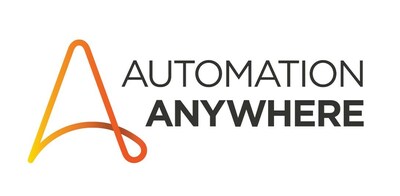To successfully design, deploy, and monitor an AI-powered automation for a small or mid-size business, it is essential to first understand the requirements and the steps involved in the process. The focus of this guide is to make the automation journey approachable for operations managers who may not have a technical background.
The first prerequisite for implementing automation is to identify repetitive and time-consuming tasks within your business processes. Focus on tasks that require a significant amount of manual intervention or produce consistent outcomes. Example tasks might include data entry, customer inquiries, or inventory tracking. Once identified, prioritize these tasks based on their potential impact on efficiency and cost savings.
Next, you will need to select an appropriate automation tool. Look for platforms that offer user-friendly interfaces tailored for non-developers. Many automation solutions come with built-in AI capabilities that facilitate process optimization. Research tools that meet your business needs, considering factors such as scalability, cost, and integration capabilities with existing systems.
After selecting a tool, the configuration phase begins. Most platforms will provide guided tutorials or wizards to help you set up workflows. Start by logging into your selected automation tool and familiarize yourself with the dashboard. Begin creating a new automation workflow by dragging and dropping components—these might include data sources, processing steps, and notification systems.
For example, if your goal is to automate invoice processing, you would first connect your accounting system to the automation platform. Next, define the trigger event, such as the receipt of a new invoice email. You would then specify actions like extracting relevant information, validating it, and entering it into the accounting system. Each platform will have specific terms and functionality, so rely on documentation and support resources.
Testing the automation is crucial. Run the workflow with sample data to ensure that it behaves as expected. Monitor the output against expected results to verify accuracy. Common issues to watch for include incorrect data extraction or processing errors. It’s advisable to run several iterations and check for edge cases where the automation might fail.
Once testing is complete, you can deploy the workflow. Typically, deployment will involve activating the automation and monitoring its initial performance closely. Ensure that your team is informed and trained on how to interact with the automation, as they may need to manage exceptions or intervene when errors arise.
Monitoring plays a vital role in ongoing operations. Most modern automation platforms provide dashboards that visualize performance metrics. You should define key performance indicators (KPIs) such as task completion rates, time saved, and error rates to measure effectiveness. Regularly check these metrics to ensure that the automation is delivering the anticipated value.
Error handling must be incorporated into your automation design. Define clear protocols for what actions to take when errors occur. This might involve setting up alerts for the responsible team members or establishing fallback procedures when automation fails. A well-thought-out error management strategy can minimize disruption and enhance employee confidence in the automated system.
Cost control is another critical aspect. Assess subscription plans, usage fees, or any additional charges associated with the automation tool you choose. Estimate your automation’s ROI by calculating the cost savings gained from taking manual work off employees’ plates versus the investment in the automation tool. Track performance over time to ensure that anticipated savings are realized.
Sensitive areas such as security, data retention, and vendor lock-in should not be overlooked. Ensure that the automation platform complies with your company’s security policies, especially if it handles customer data. Additionally, be clear about how data is stored, who has access, and how long it is retained. Review the vendor’s policies to ensure they are in line with legal standards and your company’s expectations.
Regarding vendor lock-in, evaluate if the automation tool allows for easy data migration or integration with other platforms. The ability to adapt or transition to another system is crucial, as it safeguards against future constraints that might limit business agility.
Finally, ongoing maintenance will be pivotal to ensuring that your automation continues to function optimally. Regularly review workflows to adapt them as business processes evolve. Periodically reevaluate performance metrics to align with new business goals.
FlowMind AI Insight: Automation for small and mid-size businesses has the potential to streamline operations significantly, providing both efficiency and cost savings. By methodically designing, implementing, and monitoring an AI-powered automation solution, your organization can not only enhance productivity but also overcome the challenges associated with manual processes. Embracing these technologies positions your business not just for survival, but for robust growth in an increasingly competitive landscape.
Original article: Read here
2025-09-18 07:00:00

